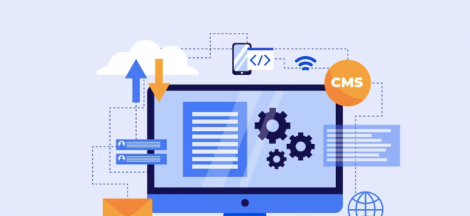What is Data?
As computers were invented, humans were using the term data that is referred to as computer information and that information has been either distributed or either stored. And yet it’s not the only single definition of data; there are also some other kinds of data. Data may be in documents forms or Handwritten paper form, or it may be bytes and bits within the storage of mobile devices, or it may be data stored within the brain of a human. So, if we discuss the data it is used mainly in the area of science and Technology. Most of the software is generally divided into two main types i.e. program and data or information. Programs are a set of commands or instructions which are used to create and modify the data. So, now that we have a clear understanding of what is data science vs Big Data vs Data Analytics.
Types of Data
Data is the set of facts and figures of information. And In the modern world, data are either in Structured form or in unstructured form. In this Article of “Data Science vs data analytic vs Big Data”, Now we discuss the two types of Data.
- Structured data is a type of data that has a sequence and very well-defined organized and structured. So if structured our data is reliable and very well defined, this is an easy process that can store and access data very easily. It’s also very easy to search the data because we can use tables to stored Structured data.
- Unstructured data is the second type of data. That is an unreliable form because it doesn’t have an organized or structure, design, or series. The unstructured data type is error-prone while a search on it. It is also a complex task to learn and execute on unstructured data files.
In this real world, rather than unstructured data, we’ve always had preferred structured data. This data will be in the type of audio format, video format, textual format, and many more formats.
What is Big Data?
Data Science, Big Data, and Data Analytics weren’t just a few technical terminologies, they are important concepts that make a significant contribution to the technology field. While these terms are (Data Science, Big Data, and Data Analytics) interlinked, there’s much important difference between them. In this ‘ Data Science vs big data vs data analytics’ article, we’ll study Big Data.
Big Data consists of large amounts of data information. Big data is generally dealt with huge and complicated sets of data that could not be managed by a traditional database system. Big data is a collection of tools and methods that collect, systematically archive, and high prices information from the database.
Types of Big Data
There are some different types of Big Data:
- Structured Data Type: This Structured data type that contains structured or organized data. That’s has provided a structured plan. This is also easy to learn, understand, and managing structured data.
- Semi-structured data type: This type of data that is stored in different file types formats such as XML, JSON format, and CSV are classified as this semi-structured data type. This is mainly organized or Structured data, that is very difficult to learn this as compared to Structured data.
- Unstructured Data Type: This category of data has not possibly well-defined structured or schemes. In this Real-world mostly all the data is unstructured and therefore hard to learn this. This data type is created via multiple digital platforms, like mobile devices, Websites, social networking sites, and also in e-commerce websites.
Characteristics of Big Data
There is a lot of characteristic of Big Data that characterizes their structure and values. This is generally 6 characteristics or 6-V Characteristic of the Big Data is defined:
- Volume: The quantity of data that is generated daily from various sources is quite high. Earlier, it had to be repetitive tasks to stored or manage the big data. However, mostly with the bits of help from Big Data development services and support of Big Data like Hadoop, we have to store such huge amounts of data very easily.
- Variety: A wide range of data is collected from various sources. This can be stored in the form of an audio file format, a video format, an image form, a document form, or an unstructured textual form. Big Data tools that help in the storage of a range of structured or organized and unstructured data.
- Velocity: In this new era, there is the number of Internet users is increasing significantly regularly. As just a result, the speed of processing of data is increased. The word Velocity that is refers to how quick this big data and retrieval takes place.
- Veracity: Veracity refers to the accuracy of the data gathered. Companies that need to take care of the accuracy of the data when accessing data such that data has become useful to everyone.
- Value: Big Data depends on the processing of data and provides any market value for companies. This makes them sustain in the market that helps to increase your profits.
- Variability: Variability is a change in their market conditions. Possibilities for development to how much this change occurs. Big Data helps to maximize such data spirals that help companies in developing the latest items.
Big Data Tools
There are a lot of tools that are available for the processing of Big Data, like
- Apache Hadoop
- Xplenty
- Apache Spark
- Knime
- Datawrapper
- MongoDB
- Lumify
- Cassandra
- Rapid Miner, and so on.
Even since the inception of Big Data is of great usage. It’s also explained by the fact which businesses have come to understand its prices from different business perspectives. So now our organizations have started to understand this data, which has seen the rapid growth of our Company over the years.
Skills that are required to become Big Data Professional
- Specialist in Hadoop Big data technology
- Strong understanding of the Apache Spark technology
- Awareness of NoSQL databases like MongoDB, Redis, Couchbase and CouchDB, etc.
- Knowledge of a method to qualitative and mathematical study
- Good understanding and hold in SQL databases like MySQL and Oracle, MariaDB, and DB2.
- Excellent holds in given programming languages like python, C, Java, C++, and Scala, etc.
What is Data Analytics?
Data Analytics tries that has to provide analytical insight into evolving business conditions. The primary task of the Data Analyst is just to look towards the existing evidence from a modern context and then consider modern and demanding market trends. Afterward, he/she uses methods to consider the best approach. Not just that, however, the Data Analyst always forecasts the future opportunities perspective that the organization will take full advantage.
The primary responsibility of the Data Analyst, as well as the Data Scientist, are very closely related. However, there are differences in the analysis part. Data Analysts analyze the data from various sources or fields for various organizations. To analyze the findings, they conduct an exploratory investigation. n They instead process and prepare the data by reviewing the results provided with the aid of a business analytics tool and the data can be processed by using a data analysis tool. Data Analyst also develops effective approaches to improve the predictive analysis of all the data. This allows companies to identify the increase or trends in the market.
Types of Data Analyst
Data is being readily available and active in the day-to-day operations of businesses company. Data is taken from analytics and, to sustain more effective decision-making, businesses need to explore different analytical approaches and figure out what it would enable themselves and get more increase their knowledge.
This is important to develop strategies about something as extensive as data analytics, with strategies across different components. Such methods can be divided into three major types i.e. Descriptive analytics, Predictive Analytics, and Prescriptive Analytics.
Descriptive Analytics
Descriptive analysis is what business companies usually use when analyzing past data and trying to extract high-level trend lines, incidences, and development opportunities. This allows businesses to find not just what has happened, and what effect may well have impacted this to happen, and how that might have an effect on some other measurement along the street.
Predictive Analytics
This predictive analysis of the next stage does what is mentioned effectively in the name that they predict. By using perspectives given by descriptive analytics, organizations will move towards effective predictive analytics type to make a better understanding and also clear look in the future Career perspective. The predictive analysis takes control of historical patterns and data flows and is using them to predict possible events so that they can monitor expectations, reorganize plans, and so on.
Prescriptive Analytics
Prescriptive analytics have to go beyond with historical data of advanced statistics and potential future effects of predictive analytics and include suggestions for the next measures to be followed. Companies will assess and agree on a variety of alternatives based on their Results or outcome of the analysis with different future scenarios.
Tools used in Data Analytics
- R programming
- Python
- Tableau Public
- SAS
- RapidMiner
- KNIME
- QlikView
- Splunk, and so on.
Data Analytics has shown incredible progress around the world. It has been a key feature for a lot of organizations. Data Analytics’ annual revenue is estimated to expand by 50 percent quickly. There’ll be a variety of career & Job openings in this Data Analytics profession.
Skills that are required to become a Data Analytics Professional
- Excellent hold in two programming language i.e. Python and R.
- Good Knowledge & understanding of Statistics and Probability.
- Analysis and visualization skills of data.
- Analytical & Technical skill.
- Awareness of Microsoft Excel.
- Good Understanding about how to develop interactive dashboards.
Data Analyst Salary
Data Analyst Average salary is approx. US$ 105,253 per annum for Fresher.
What is Data Science?
Data Science is a combination of various methods, algorithms, and principles of machine learning concepts with both the goal of finding hidden knowledge through raw data. Data Science helps to break a big or huge chunk of Data into a small slice or piece. Data Science uses sources to obtained useful data from data structures and patterns and the Data Scientists were also play a vital role in the development of factual information or data that hidden data within complex networks of structured or unstructured data. Data Scientist helps to make a big business decision similar to the market. Data Scientist also allows the implementation of machine learning algorithms on top of a visualization of data.
Tools for Data Science
A number of Data Science tools are Available that are used by a lot of Data scientists. Given Below list of some best tools that are used mostly all the Data scientists:
- Apache Spark
- D3.js
- MATLAB
- Excel
- ggplot2
- Tableau
- Jupyter
- Matplotlib
- NLTK
- Scikit-learn
- TensorFlow
- Weka
Data science tools that are used to analyze data, create aesthetic as well as responsive visualizations and develop strong statistical models by using the machine learning algorithms that are used in different languages. Many other data science tools deliver complicated data science operational activities with one position. Data Scientist makes it difficult for the customers to incorporate data science features without having written their single line of code or multiple line code. And Lot of other or different tools are available in the market that is used a lot of Data Scientist.
Skills that are needed to become Data Scientist
- Clear and good understanding or good Holds of the Python & R programming languages.
- Good grasp of mathematics and full knowledge of probability & statistics Math Concepts.
- Knowledge of SQL Database commands and Queries Clear Understanding in Data Mining Concept.
- Awareness about how to work with data visualized tools.
If you learn these skills, So you will be able to start your technical career in the Data Scientist field.





 What is Sitemap? How is it helpful for a Website?
What is Sitemap? How is it helpful for a Website?
Nice and helpful information was shared by this article. Thanks For Sharing
We have read your blog. It was really informative and we have gathered much knowledge that has helped me a lot.
This post is very helpful and informative. I am really happy.